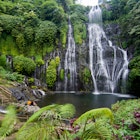
Jan 6, 2026 • 9 min read
Here's everything you need to know about visiting the Acropolis in Athens.

Jan 6, 2026 • 9 min read
Here's everything you need to know about visiting the Acropolis in Athens.

Jan 6, 2026 • 6 min read
From medialunas to limpets, here are eight things to try in Lima.

Jan 6, 2026 • 7 min read
Our pick of the best day trips from Stockholm are perfect for fans of history and the outdoors.

Jan 6, 2026 • 5 min read
With beaches in the high season, solitude in the low season, and hiking and wildlife watching in between, the best time to visit Indonesia is now.

Jan 6, 2026 • 11 min read
Some of Rome's best things to see and do can be experienced for free. Here's how.

Jan 6, 2026 • 6 min read
Rome has so much history and art to showcase that it requires about 250 dedicated institutions – start with these 8 of the top museums in Rome.

Jan 6, 2026 • 7 min read
This small fishing village attracts travelers from all over and is a firm favorite for locals too looking for a beach getaway.

Jan 6, 2026 • 6 min read
Malaga's streets buzz with life year round as more people discover its ancient sites, contemporary art museums, and bars and taverns.

Jan 5, 2026 • 7 min read
The expansive region is a veritable winter wonderland of stunning forests, epic natural phenomenon and Sámi culture – plus Santa's village.

Jan 5, 2026 • 5 min read
This walking tour through central Bogotá will take you past plazas, churches and other spots where Colombian history unfolded.

Jan 5, 2026 • 9 min read
Explore North America on these incredible trips to peaceful national parks, vibrant music-filled cities and fascinating ancient temples.

Jan 5, 2026 • 5 min read
Samhain celebrations have been a traditional part of Irish life for centuries and are stronger today than they have been for decades.

Jan 5, 2026 • 8 min read
Mardi Gras is a colorful, chaotic, truly epic New Orleans festival. Here's everything you need to know to make the most of this celebration.

Jan 5, 2026 • 6 min read
Costa Rican spas are set against a stunning backdrop of tropical rainforests, palm-fringed beaches and volcanic national parks.

Jan 5, 2026 • 3 min read
From volcano surfing to roasting marshmallows over molten rock, the chain of volcanoes that make up Central America's spine is not short on adventure.

Jan 5, 2026 • 8 min read
Traditional bathhouses are an important part of South Korean culture, and one of the country's best experiences. Here's how to visit a jjimjilbang.

Jan 5, 2026 • 14 min read
Paris’ 20 different districts (called arrondissements), spiral clockwise from the center like a snail shell. Get to know them all with our thorough guide.

Jan 5, 2026 • 2 min read
Enjoy the ride as this photographer takes you on a road trip filled with flowing rivers, mountainous valleys and more.

Jan 5, 2026 • 9 min read
Make 2026 the year you take one of these dream trips to South America.

Jan 5, 2026 • 6 min read
Famed for its color and bustle, India is equally a place of profound serenity. Embark on a spiritual journey in the birthplace of many wellness practices.

Jan 5, 2026 • 10 min read
These safari lodges, hotels and tented camps deliver truly magical stays and memorable wildlife experiences in Sri Lanka.

Jan 5, 2026 • 8 min read
Madrid's deep mix of cultural attractions, epic food and electric nightlife could fill a dozen visits; build your trip around these 12 experiences.